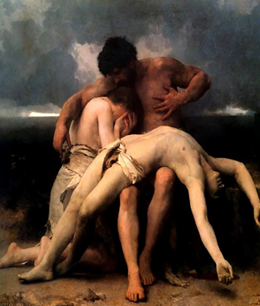 |
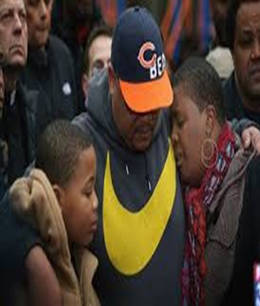 |
“The First Mourning,” Painter: William Bouguereau
(Image of Adam and Eve Weeping Over
their Son Abel) |
“The Continued Mourning,” Nathaniel and Cleopatra
Pendleton, parents of slain teen Hadiya
Pendleton, and her 10-year-old brother |
RESTORING THE PEACE (COMMUNITY ACTION DAY)
CULTURAL RESOURCES
Sunday, June 2, 2013
Jamall Calloway, Guest Cultural Resource Commentator
Third Year Master of Divinity student, Yale Divinity School, New Haven, CT
Lection – Genesis 4:1-15
I. Historical Section
Our world is plagued with senseless crime and violence. Pervasive hate crimes, bullying, sexual assaults, and murders all signify a world where the precious life of our neighbor is neither cherished nor honored, neither valued nor respected. In this world, it seems that the precious life of our neighbor is perceived as nothing more than an object worthy of petty thievery. Hate crimes due to race, ethnicity, non-normative gender performances, and sexual orientation and identities portray a world where cherishing individual choices and differences are absent. Bullying—be it cyber or physical—depicts a society that refuses to honor the need for safety and security. The despicable amount of sexual assaults in our cultures, and the silence that surrounds them, are evidence of a world that refuses to value and protect the less powerful, while murders from Chicago to Pakistan reveal our lack of respect for the imago dei in every single one of us. There are far too many Cains in this world who are leaving the bodies of our sisters and brothers on the ground.
The Cains of this world are perpetrators of Hate Crimes. James Craig Anderson1 was a 49-year-old auto plant worker in Jackson, Mississippi, who was attacked by a group of teenagers from the neighboring town of Brandon, Missouri. Anderson was minding his own business when the teens yelling “White Power!” accosted him for no other reason than his race. Anderson was found lying lifeless on the concrete as a result of the teenagers running him over with a Ford F250 green pickup truck.
The Cains of this world are perpetrators of bullying. In New Haven, Connecticut, Ryan Rodriguez2 (12 years old) was stabbed in the back of his neck with a mechanical pencil. He refused to tell proper authorities who stabbed him because he was threatened with the urban adage “snitches get stitches” and therefore feared retaliation. When asked about the reasons he was bullied he told authorities that it was because he was not black enough. Rodriguez was a white and Hispanic adolescent in a school where mostly black students attended.
The Cains of this world are perpetrators of rape and sexual assault. According to data from the U.S. Centers of Disease Control and Prevention, 10.5 percent of all high school-age girls have experienced sexual assault. In this world we need to do a better job of protecting our young girls and teaching our boys to respect them. The CDS data3 also reveals that in the state of Indiana alone, the rate is a shocking 17.3 percent of girls in grades nine through 12 who have reported experiencing rape or sexual assault.
The Cains of this world are perpetrators of murder. Victims of murder, Trayvon Martin4 and Jordan Davis,5 are not the first and unfortunately not the last. But they are two prime examples of the expendability of black bodies in this country. Martin was just heading home from the convenience store when George Zimmerman murdered him. Davis and his friends had their music too loud for Michael David Dunn’s liking. Dunn shot 9 bullets into the vehicle in which Davis was sitting, ultimately killing Davis.
The Cains of this world are not only murdering in Florida. They are also killing each other in Chicago, Illinois. The police reported approximately 500 homicides6 in 2012. We live in tough times. The crime and violence data is unfathomable. But even more unfathomable and unfortunate is that people of color in this nation are hit the hardest in almost every category. Black and brown people are suffering. Violence in our communities is killing our sons and daughters at high numbers while the prison industrial system is incarcerating those that death has not grabbed—yet.
But violence in our communities is nothing new. From slavery to lynching, rape to race riots, our communities seem condemned to constantly battle “[A]gainst principalities, against powers, against the rulers of the darkness of this world, against spiritual wickedness in high places.”7
But the Cains of this world do not have the last say. GOD does. GOD is a GOD of justice and forgiveness. God brings justice to situations and forgiveness to the perpetrators involved in tough situations. Through God’s people, who refuse to perpetuate violence and instead determine to be a people who embrace our communities and embrace even the Cains of the world, God is present to break the cycle of violence. This is how peace is restored to our communities. How does refusal to perpetuate violence look? As a young black male, for me it looks like the 5 P’s: Prayer, persistence, parenting, programs (church, neighborhood, state, and federal), and proper laws (police laws, economic laws, educational laws, governmental laws, and the law of community/village influence). See section III below for examples of the 5 P’s.
II. Cultural Response to Significant Aspects of the Text(s)
Historical Lesson
One specific incident in the shadows of American history that highlights this constant battle took place in Tulsa, Oklahoma, in 1921. Black people who were living in the Greenwood District of Tulsa were thriving economically and educationally.
Economically they were a self-reliant black community that only purchased from and shopped in black businesses. They were thriving educationally because the countless black business owners and families could afford to send their children to the local black colleges and universities. This district was known as the “Negro Wall Street” (currently known as Black Wall Street) because it was the wealthiest black district in the nation at the time. Jim and Jane Crow had actually been a good thing for this district because it fueled their independence and self-reliance.
This all changed on May 31, 1921 when a 19-year-old black shoe shiner named Dick Rowland was falsely accused of assaulting/raping a white woman in the downtown Drexel Building elevator. This accusation and built-up resentment towards the “Negro Wall Street” incited one of the worst race riots this nation has ever seen. It was reported: “Whites charged through the community in retaliation, leaving an estimated 300 people dead, another 10,000 black residents homeless and 35 city blocks in ruin.”8 This riot and attack abolished an entire African American enclave in Oklahoma.
The erasure of this incident from America’s history books and media highlights two things. The first thing it highlights is the long history of black and brown bodies being viewed as expendable in the American imagination and history. The second thing it highlights is the indifference of informing the general public about the expendability of black and brown bodies in the American media. But the American imagination and media do not have the last say. GOD does.
III. Making It a Memorable Learning Moment (Putting the 5 P’s into Practice)
Most sane and right-thinking Christians will quickly say they abhor violence, especially the type of violence that entails the killing of innocent children. In the Black community we will quickly say this too, especially as we look at our children being killed by each other and trigger-happy police. However, the ludicrous level of violence has, for the most part, silenced and sidelined us, unless you count talk by the NRA and politicians who fear not being re-elected more than they do high murder rates. For all of its usual boisterousness, the Church (universal) has said and done little to stop gun violence, especially in communities of color. We know why those who make money working in concert with gun manufacturers are silent and sidelined, but why the Church and especially why the Black Church? But even more than our silence, other than homilies that bemoan the problem and offer few or no solutions, our failure to act (get off the sidelines) has been difficult to fathom and hard to reconcile with the love we say we have for God, for black and brown people, and for black and brown children in particular.
To fully address the reasons for our sad silence and sideline posture would take much more space than this cultural resource unit affords, so let me leave the former remarks as serious ones to ponder, as I move to some examples of putting the 5 P’s (Prayer, persistence, parenting, programs (church, neighborhood, state, and federal), and proper laws (police laws, economic laws, educational laws, governmental laws, and the law of community/village influence), into practice.
- Programs by Community Organizations. Whether we know it or not, there are hundreds of community organizations around the country who are working to end violence, especially violence against children. Inform your congregation about coalitions that are working to end the violence in your community. Through such groups, help is being offered for parents who have few parenting skills; children who are being bullied are being helped; men with anger management issues are being helped; neighborhood watch programs are being formed; teens are being employed; and so many other actions that lessen violence are being attempted. Find ways to support one or more of these groups. Perhaps your church can offer volunteers, raise funds, offer meeting space, run announcements in your bulletin, help push initiatives, sign petitions, and more.
- Church Coalitions. In Chicago, there is the Chicago Clergy Coalition (CCC). The CCC consists of a plethora of churches working together to end gang violence. Churches across this nation can follow their lead by also creating clergy coalitions that are not restricted to any one type of religion. When it comes to human lives, religions can put aside their differences and work together to end violence in our communities. More information on the Chicago clergy project can be found at: http://www.aaastudios.com/CCC/Welcome.html.
- Activities for Teens and Youths. When I spoke of programs as one of the 5 P’s, this certainly included Church-sponsored programs. Although none of us fully understand why people kill one another, we do have enough data that shows that children can be and must be taught behaviors that lead them away from violence. Have the children in your Sunday school and teens in youth programs write about other people who do not look like them. Have them write what they like about the people who do not look like them. Then have them write what they love about themselves. Come up with activities that will get kids to be honest about noticing and valuing how they are different from others, while also ensuring that they love themselves as well. A large amount of material is available to aid in such efforts; particularly see anti-bulling materials and books.
- Workshops for Adults. Our Churches are not well-educated when it comes to differences concerning gender and sexuality. Conduct a reading group or a workshop or show documentaries about the plight of other oppressed communities. Education is the key. It may not change or enlighten everyone, but it can help a few understand that violence happens to more than just black and brown people. And, quite importantly, it may help adults understand how hate is bred by fear of those who are different and how we teach (by omission and commission) such hate to children.
- Worship Services. Throughout the year, have several worship services (at least one with another church, perhaps at another church) focused on eradicating spirits of violence in your community. Human lives are being taken, abused, and mistreated, and the Church is an institution that inculcates worth and value into GOD’s creatures and creation. Liturgically, through music and service, the Church can attract and must actively seek out people filled with hate and despair and show that GOD’s doors are open to everyone. GOD’s loves extends to the Cains of the world, just as it did in the text. However, after each service, make sure that there is an action period. Perhaps your church will choose this as its main prayer concern for the year. Perhaps your mens group will choose to make it their focus and start a program accordingly or partner with a group accordingly. Sisters churches may even choose to hold city-wide services (as they often do city-wide revivals). The difference is that in these services, religious difference will be set aside in the name of peace and no church will be allowed to leave without agreeing to put their faith into practice in some way. Persistence and prayer will be required.
- Political Action. This is probably the area where the Church is least involved, making sure that local, state, and federal laws are enacted to lessen violence. We have ceded this work to politicians. Although we elect politicians, we cannot stop there; we must hold them accountable. As I heard a woman say when interviewed recently by a passing reporter, “I am going to wage a kick-them-out-campaign if my senators do not vote for the assault weapons ban.” Amen, sister. This is what’s needed. The people of the Church cannot be silent and cloistered on this issue; it’s too important. We have iPhones, iPads, twitter accounts, Facebook accounts, and bank accounts. Each must be used to send messages to those who make laws that continue to allow violence to spin out of control in this country. It took the killing of innocent mainly non-brown and non-black children at Sandy Hook Elementary School to get the nation talking about the violence caused by guns in our society. However, we soon learned that even white folk didn’t stay up in arms long. Quickly, local and national politicians and gun lobbyists shouted them down or silenced them too. But on this one, we cannot go silently into the night. Black churches, white churches, synagogues, mosques, and temple members have to stand up. What do you think would happen if every religious establishment in Chicago (clergy and members) went to the offices of their mayor, senators, and house reps. and said, “Unless you do something major to lessen violence in our communities now, we are waging a campaign to kick you out”?
IV. Quotes on Violence
Nihilism is a natural consequence of a culture (or civilization) ruled and regulated by categories that mask manipulation, mastery and domination of peoples and nature.
Quotes by Dr. Martin Luther King Jr.:
- Darkness cannot drive out darkness: only light can do that. Hate cannot drive out hate: only love can do that.
- I have decided to stick to love…Hate is too great a burden to bear.
- Let no man pull you so low as to hate him.
- Injustice anywhere is a threat to justice everywhere.
- People fail to get along because they fear each other; they fear each other because they don’t know each other; they don’t know each other because they have not communicated with each other.
- Love is the only force capable of transforming an enemy to a friend.
V. Songs for This Moment on the Calendar
Hezekiah Walker’s “I Need You to Survive” is an excellent song selection that explains the desire for human flourishing and co-existence. It is one of the best anthropocentric gospel songs ever written.
I Need You to Survive
by Hezekiah Walker
I need you, you need me.
We’re all a part of God’s body.
Stand with me, agree with me.
We’re all a part of God’s body.
It is his will, that every need be supplied.
You are important to me, I need you to survive.
You are important to me, I need you to survive.
(repeat 3X)
I pray for you, You pray for me.
I love you, I need you to survive.
I won’t harm you with words from my mouth.
I love you, I need you to survive.
(repeat 8X)
It is his will, that every need be supplied.
You are important to me, I need you to survive.9
The Five Stairsteps are not a gospel group. But there are certain songs that I believe transgress genres and are church-friendly, and “Ooh-oo, Child” is one of them. This song speaks to everyone living in tough times. This song speaks to those who are struggling with life in the urban areas of our nation. I believe this selection would be a pleasant surprise to the church.
Ooh-oo, Child
by The Five Stairsteps
Ooh-oo, child, things are gonna get easier
Ooh-oo, child, things’ll get brighter
Ooh-oo, child, things are gonna get easier
Ooh-oo, child, things’ll be brighter
Some day, yeah
We’ll put it together and we’ll get it all done
Some day
When your head is much lighter
Some day, yeah
We’ll walk in the rays of a beautiful sun
Some day
When the world is much brighter
Ooh-oo, child, things are gonna be easier
Ooh-oo, child, things’ll be brighter
Ooh-oo, child, things are gonna be easier
Ooh-oo, child, things’ll be brighter
Some day, yeah
We’ll put it together and we’ll get it all done
Some day
When your head is much lighter
Some day, yeah
We’ll walk in the rays of a beautiful sun
Some day
When the world is much brighter.10
Kirk Franklin’s “Blessing in the Storm,” encourages us to understand that GOD is on our side and even though we might be struggling as a community, GOD is still present within us in our storm. The Blessing manifests itself as a lesson or a stronger spirituality and connection with Jesus. This song serves as a reminder that GOD does not abandon us but remains with us. Despite everything, there is a blessing awaiting us all.
Blessing in the Storm
by Kirk Franklin
Verse 1
When I cannot here the sparrow sing
And I cannot feel the melody
There’s a secret place that’s full of grace
There’s a blessing in the storm,
Help me sing it
There’s a blessing in the storm.
Verse 2
When the sickness won’t leave my body
And the pain just won’t leave my soul
I get on my knees and say “Jesus please”
There’s a blessing in the storm,
Help me sing it
There’s a blessing in the storm.
Verse 3
When I cannot seem to love again
And the raindrops won’t ever end
If you just hold on
Those clouds will soon be gone
There’s a blessing in the storm
Help me sing it
There’s a blessing in the storm.
Sweet, sweet, the storm, sweet.11
VI. Books
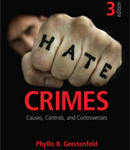 |
Gerstenfeld, Phyllis B. Hate Crimes: Causes, Controls, and Controversies. Thousand Oaks, CA: SAGE Publications, 2013. |
|
|
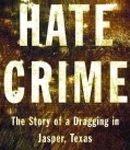 |
King, Joyce. Hate Crime: The Story of a Dragging in Jasper, Texas. New York, NY: Pantheon, 2002. |
|
|
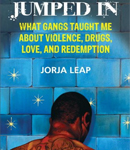 |
Leap, Jorja. Jumped In: What Gangs Taught Me about Violence, Drugs, Love, and Redemption. Boston, MA: Beacon, 2012. |
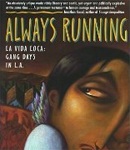 |
Rodriquez, Luis J. Always Running: La Vida Loca: Gang Days in L.A. New York, NY: Simon & Schuster, 1993. |
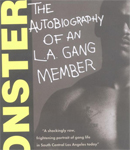 |
Shakur, Sanyika. Monster: The Autobiography of an L.A. Gang Member. New York, NY: Penguin, 1994. |
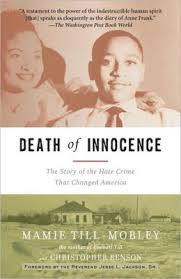 |
Till-Mobley, Mamie, and Chris Benson. Death of Innocence: The Story of the Hate Crime That Changed America. New York, NY: Random House, 2003. |
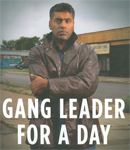 |
Venkatesh, Sudhir Alladi. Gang Leader for a Day: A Rogue Sociologist Takes to the Streets. New York, NY: Penguin, 2008. |
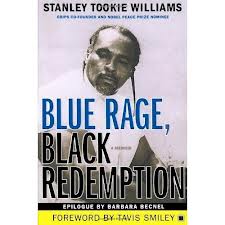 |
Williams, Stanley Tookie. Blue Rage, Black Redemption: A Memoir. New York, NY: Simon & Shuster, 2010. |
VII. Audio Visual Aids
To aid in helping hearers remember the morning sermon and the message of today’s or other text used to address the issue of violence, one may want to put in the bulletin/order of service or use on screens in church, one or more of the following images:
Gang Violence
- Place pictures of the victims of gun violence in the bulletin or announcements to remind the church of this major problem.
- Show video news clips where reporters are giving details of recent events in your community to combat violence.
- Show the church the last tweets and Facebook statuses of victims of gun violence. Used appropriately, this will have an impact, especially upon youth and young adults.
- Allow former gang members to explain to the church what gang life was like and why they were a part of it. This does not have to take place during morning worship but it can; this type of dialogue can be beneficial.
- Watch films about gang life with the church and have a discussion afterwards:
Hate Crimes
- Keep track of hate crimes reported by the FBI and periodically mention them to your church and have them pray for the families of the victims and perpetrators.
- Show video news clippings of reports:
- Hold a vigil for the community to commemorate those who are victims of hate crimes.
Notes
1. http://www.cnn.com/2011/CRIME/08/06/mississippi.hate.crime/index.html.
2. http://www.huffingtonpost.com/2012/01/31/boy-stabbed-because-he-allegedly-wasnt-black-enough_n_1244870.html.
3. http://www.in.gov/isdh/files/PH_Fact_Sheet.pdf.
4. http://www.cnn.com/2012/05/18/justice/florida-teen-shooting-details/index.html.
5. http://www.cnn.com/2012/11/26/us/florida-music-shooting/index.html.
6. http://newsroom.blogs.cnn.com/2012/12/28/chicago-hits-500-homicides-this-year/.
7. Ephesians 6:12.
8. http://pages.uoregon.edu/kimball/1921-Tulsa.race.riot.htm.
9. “I Need You to Survive.” By Hezekiah Walker. Hezekiah Walker and The Love Fellowship Choir. Family Affair II: Live at Radio City Music Hall. New York, NY: Verity, 2002.
10. “Ooh-oo, Child.” By the Five Stairsteps. The First Family of Soul: The Best of The Five Stairsteps. Sbme Special Mkts., 2008.
11. “Blessing in the Storm.” By Kirk Franklin. The Nu Nation Project. Inglewood, CA: Gospocentric, 2001.
|